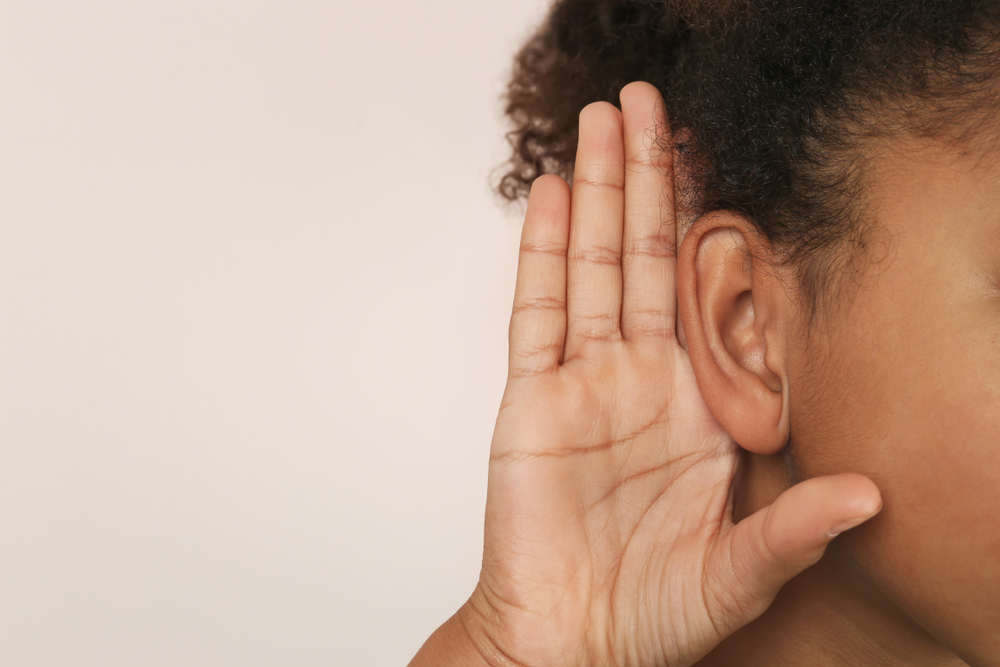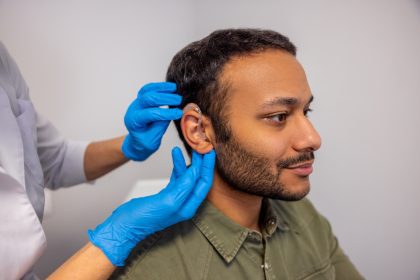This article explores the fascinating world of deafness, examining its various forms, causes, and the innovative ways people adapt to communicate effectively.
What is deafness?
Deafness represents a profound hearing loss affecting approximately half a million Americans, creating significant communication challenges. People experiencing deafness might hear absolutely nothing or only detect extremely loud sounds. Their condition develops from numerous potential sources including age-related decline, genetic factors, serious infections, or physical injuries to the auditory system.
The human ear functions as an intricate three-part system comprising the outer ear, middle ear, and inner ear. These components collaborate to transform ambient sound waves into electrical signals the brain can process and interpret. When any section of this delicate mechanism suffers damage, hearing capacity diminishes or disappears entirely. Though many forms of deafness remain permanent, remarkable technological advances like sophisticated hearing aids and cochlear implants now offer hope for partial hearing restoration.
The 5 main classifications of hearing loss
Medical professionals classify deafness into distinct categories based on which part of the hearing mechanism sustains damage:
- Conductive hearing loss occurs when sound waves cannot properly travel through the outer or middle ear. People with this condition typically describe sounds as muffled or distant. Common causes include ear infections, fluid buildup, earwax blockage, or structural abnormalities in the ear canal or middle ear.
- Sensorineural hearing loss stems from damage to the inner ear’s delicate hair cells or to the auditory nerve itself. This represents the most common form of permanent hearing loss. Affected individuals often struggle to distinguish certain speech sounds even when volume seems adequate. They frequently report distortion alongside muffling.
- Mixed hearing loss combines elements of both conductive and sensorineural issues simultaneously. People with this dual condition face particularly complex hearing challenges requiring comprehensive treatment approaches.
- Auditory neuropathy spectrum disorder disrupts the normal transmission of sound signals from the inner ear to the brain. Though the ear may capture sounds correctly, the brain receives scrambled or incomplete information, making sound interpretation difficult despite normal sensitivity to sound volume.
- Central hearing loss involves problems with the brain’s processing centers rather than the ear itself. The ears function normally, but the brain struggles to interpret the information received.
Risk factors that increase chances of hearing loss
Several factors significantly raise an individual’s likelihood of developing deafness over their lifetime:
Age remains the leading risk factor, with hearing naturally declining as people grow older. By age 65, one in three people experiences some degree of hearing loss.
Maternal infections during pregnancy, particularly cytomegalovirus, rubella, or herpes, can potentially damage a developing baby’s hearing apparatus before birth.
Genetic predisposition plays a crucial role, with over 400 genetic syndromes involving hearing loss identified by researchers. Family history often predicts future hearing issues.
Noise exposure, especially repeated or prolonged exposure to sounds exceeding 85 decibels, damages the inner ear’s delicate hair cells permanently. Industrial workers, musicians, and military personnel face particularly high risk.
Chronic ear infections, especially untreated ones, can damage the eardrum and middle ear structures over time, leading to permanent hearing changes.
Certain medications, especially some antibiotics and chemotherapy drugs, may damage hearing as a side effect, particularly when taken in high doses or for extended periods.
Warning signs of hearing issues in children
Early detection dramatically improves outcomes for children with hearing loss. Parents should watch for these telltale indicators:
A lack of startled response to sudden loud noises may suggest hearing difficulties in infants. Babies typically demonstrate the startle reflex when exposed to unexpected sounds.
Language development delays often signal hearing issues. Children with normal hearing typically babble by six months and say first words around one year.
Speech production difficulties frequently accompany hearing loss. Children with hearing issues may have unclear pronunciation or speak with unusual voice quality.
Behavioral changes sometimes manifest in children who cannot hear properly. They may appear inattentive, withdraw socially, or demonstrate frustration when unable to follow conversations.
Poor academic performance often results from undiagnosed hearing loss, as children miss classroom instructions and discussions.
Adult symptoms that indicate hearing decline
Adults experiencing hearing loss typically notice these progressive changes:
Conversations become increasingly difficult to follow, especially in noisy environments like restaurants or group settings. Many adults find themselves repeatedly asking others to repeat themselves.
Telephone conversations present particular challenges, as they lack visual cues that normally help compensate for hearing deficits.
Television or radio volume requirements increase steadily, often prompting complaints from family members about excessive loudness.
Tinnitus, experienced as persistent ringing, buzzing, or hissing sounds, frequently accompanies hearing loss, though it can occur independently.
Social withdrawal often develops as hearing difficulties make interactions frustrating or embarrassing, potentially leading to isolation and depression.
Diagnostic approaches and modern treatment options
Healthcare professionals employ several sophisticated tests to assess hearing function accurately:
Audiologists conduct comprehensive hearing evaluations using pure-tone audiometry, which measures the softest sounds a person can detect across different frequencies. This creates an audiogram mapping hearing sensitivity.
The Auditory Brainstem Response test records electrical activity along the hearing pathway from the ear to the brain, helping diagnose neural hearing issues.
Otoacoustic Emissions testing measures sounds produced by the inner ear’s hair cells in response to stimulation, identifying problems at the cochlear level.
Tympanometry evaluates middle ear function by measuring eardrum movement, helping diagnose conductive hearing issues.
While many forms of hearing loss remain permanent, remarkable treatment advances continue improving outcomes:
Hearing aids have evolved into sophisticated digital devices that selectively amplify specific frequencies based on individual hearing patterns. Modern aids incorporate directional microphones, noise reduction algorithms, and wireless connectivity features.
Cochlear implants bypass damaged portions of the ear by directly stimulating the auditory nerve. These devices transform sounds into electrical signals the brain learns to interpret as meaningful sound.
Auditory brainstem implants provide solutions for people whose auditory nerves have been damaged or removed, sending signals directly to the brainstem.
Bone-anchored hearing systems transmit sound through bone conduction, bypassing the outer and middle ear entirely.
Communication approaches within the deaf community
People with hearing loss develop diverse communication strategies based on their specific needs and preferences:
Sign languages, including American Sign Language (ASL), serve as complete, natural languages with distinct grammatical structures and vocabulary. ASL utilizes handshapes, movements, facial expressions, and body positioning to convey meaning.
Cued speech combines lip reading with hand positions that clarify ambiguous mouth movements, helping distinguish similar-looking sounds.
Written communication has transformed with technology, with text messaging, captioning services, and speech-to-text apps facilitating real-time interactions.
Lip reading allows some individuals to understand speech by watching mouth movements, though it provides incomplete information as many sounds look identical when spoken.
Total communication employs multiple methods simultaneously, combining signing, speaking, writing, and visual aids to ensure comprehensive understanding.
Protective measures against preventable hearing loss
While genetic and age-related hearing loss often cannot be prevented, people can take steps to protect their hearing:
Noise protection remains essential in loud environments. Properly fitted earplugs or earmuffs can reduce sound intensity by 15-30 decibels. Workers in noisy settings should follow workplace safety protocols consistently.
Regular hearing screenings enable early intervention before minor issues progress to significant problems. Adults should have baseline hearing tests by age 50, with follow-ups every few years.
Prompt treatment of ear infections prevents complications that might damage hearing structures. This proves especially crucial for children who experience frequent ear infections.
Medication management should include awareness of potentially ototoxic drugs. Patients should discuss hearing-related concerns with healthcare providers when prescribed medications with known hearing risk.
Living with deafness in modern society
The deaf experience encompasses far more than medical considerations:
Deaf culture represents a rich heritage built around shared language, experiences, and values. Many deaf individuals identify proudly with this community, viewing deafness as a cultural identity rather than a disability.
Technological innovations continue improving accessibility. Video relay services, captioned media, flashing alarms, and vibrating alerts help deaf individuals navigate hearing-centric environments.
Educational approaches have diversified, ranging from mainstream schools with support services to specialized schools for the deaf. Each option offers distinct advantages depending on individual needs.
Workplace accommodations have expanded through awareness and legislation. Reasonable accommodations might include communication facilitators, amplified telephones, or visual alert systems.
Understanding deafness requires recognizing both its medical aspects and its profound cultural dimensions. With continuing advances in technology, medicine, and social awareness, people with hearing loss find increasing opportunities for full participation in all aspects of contemporary life.















